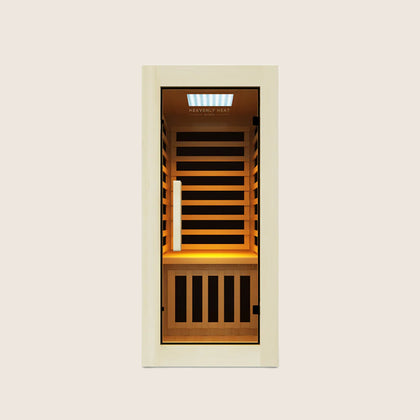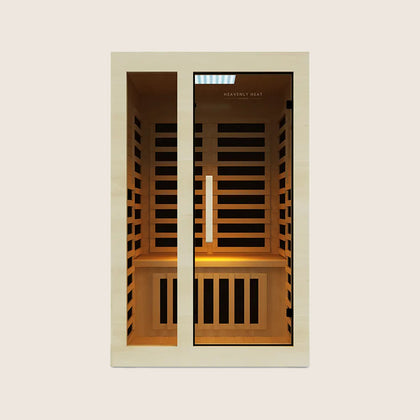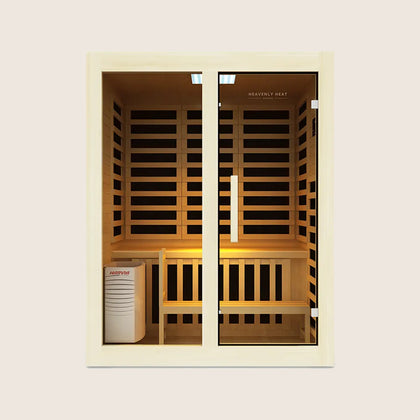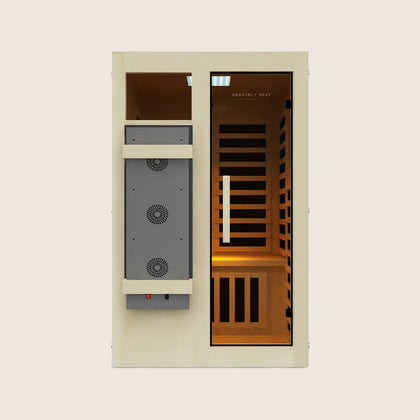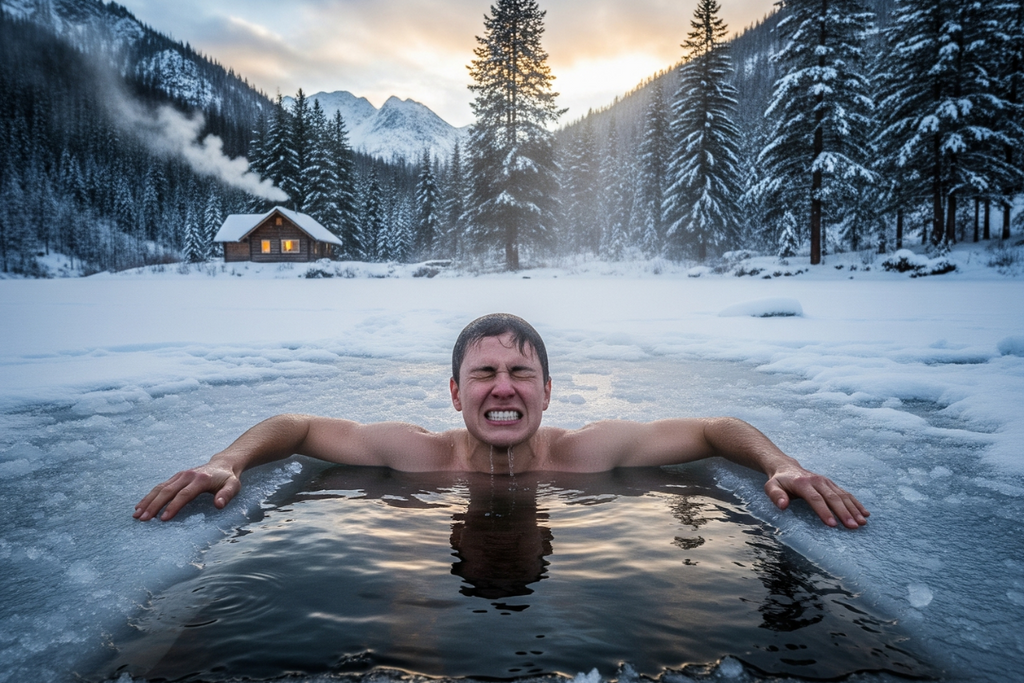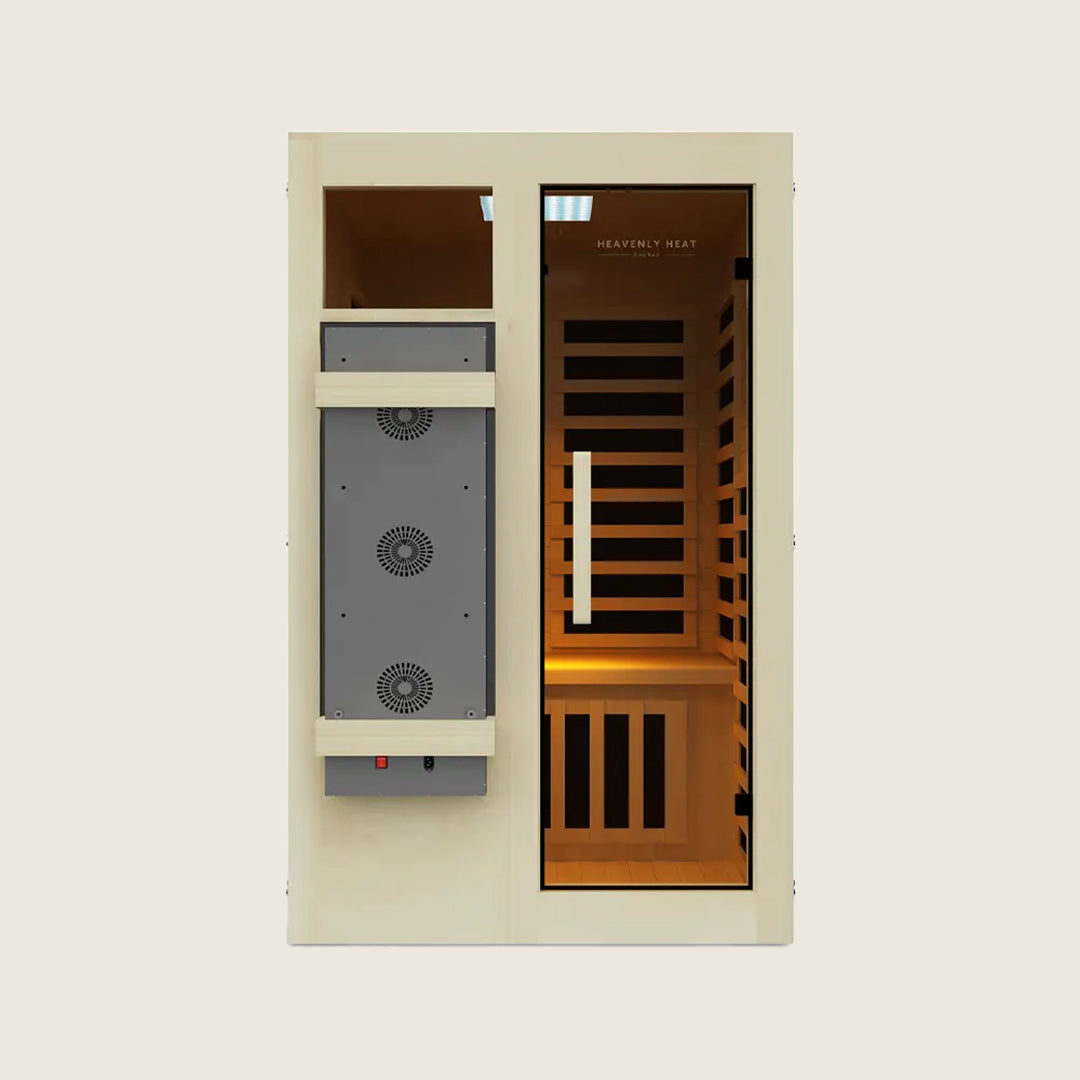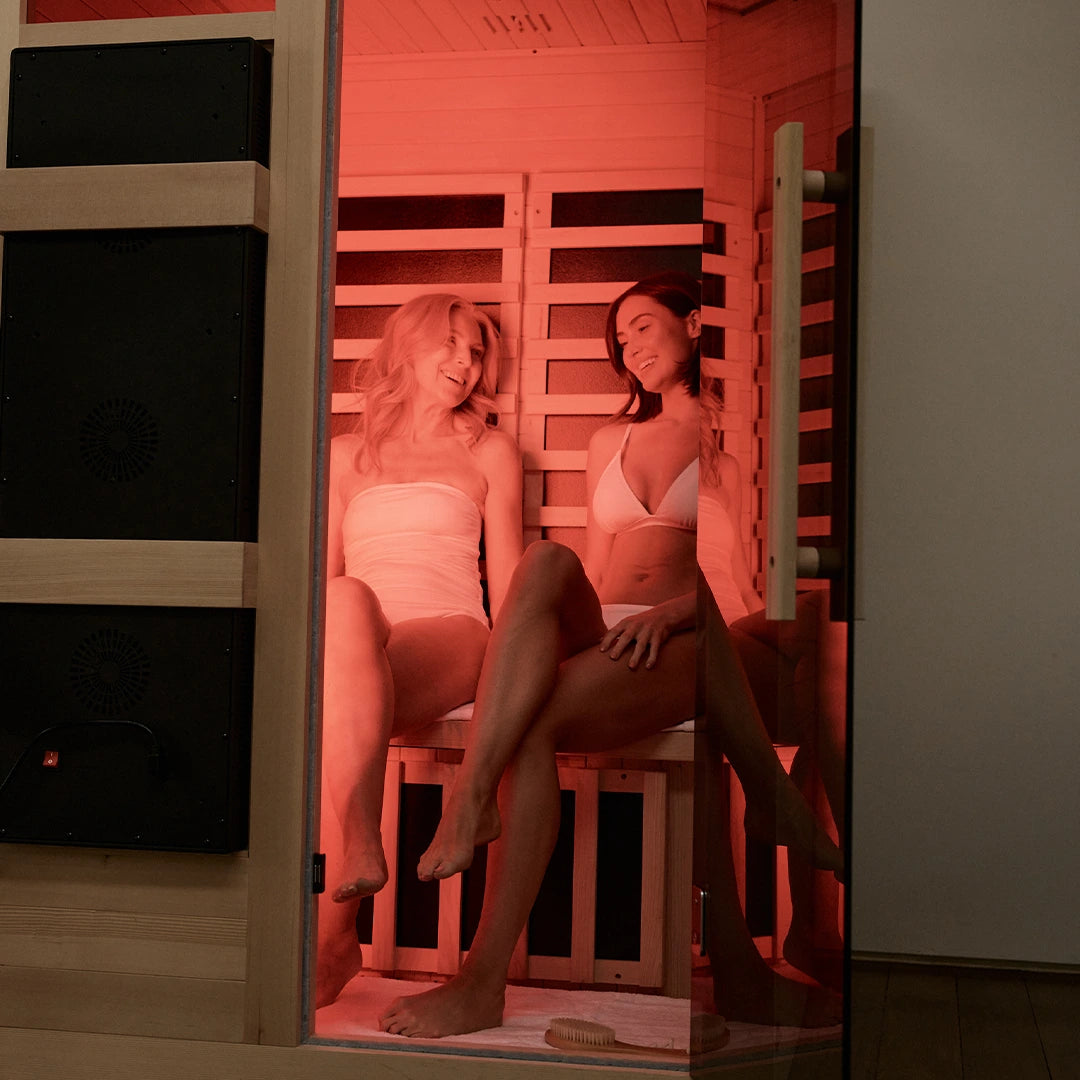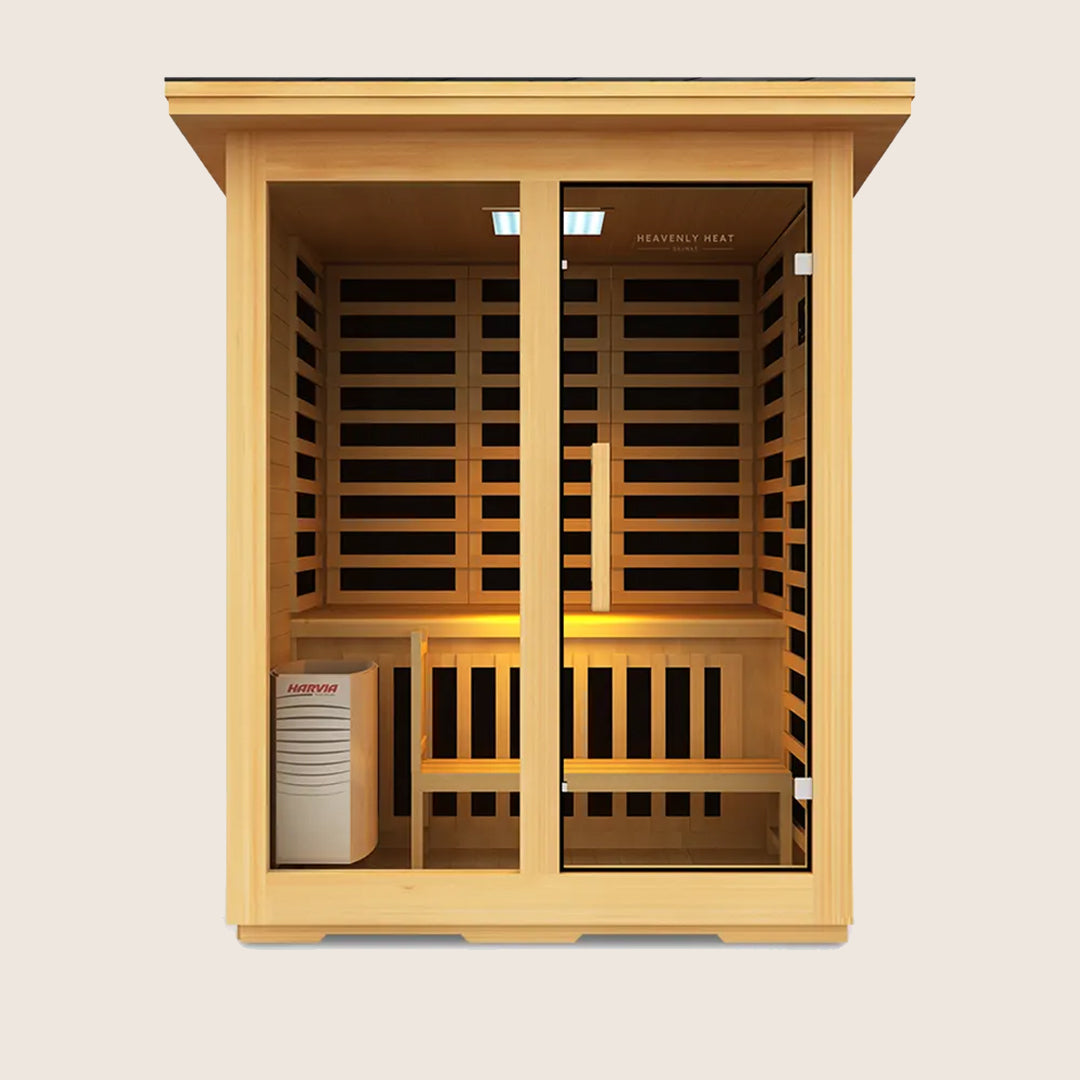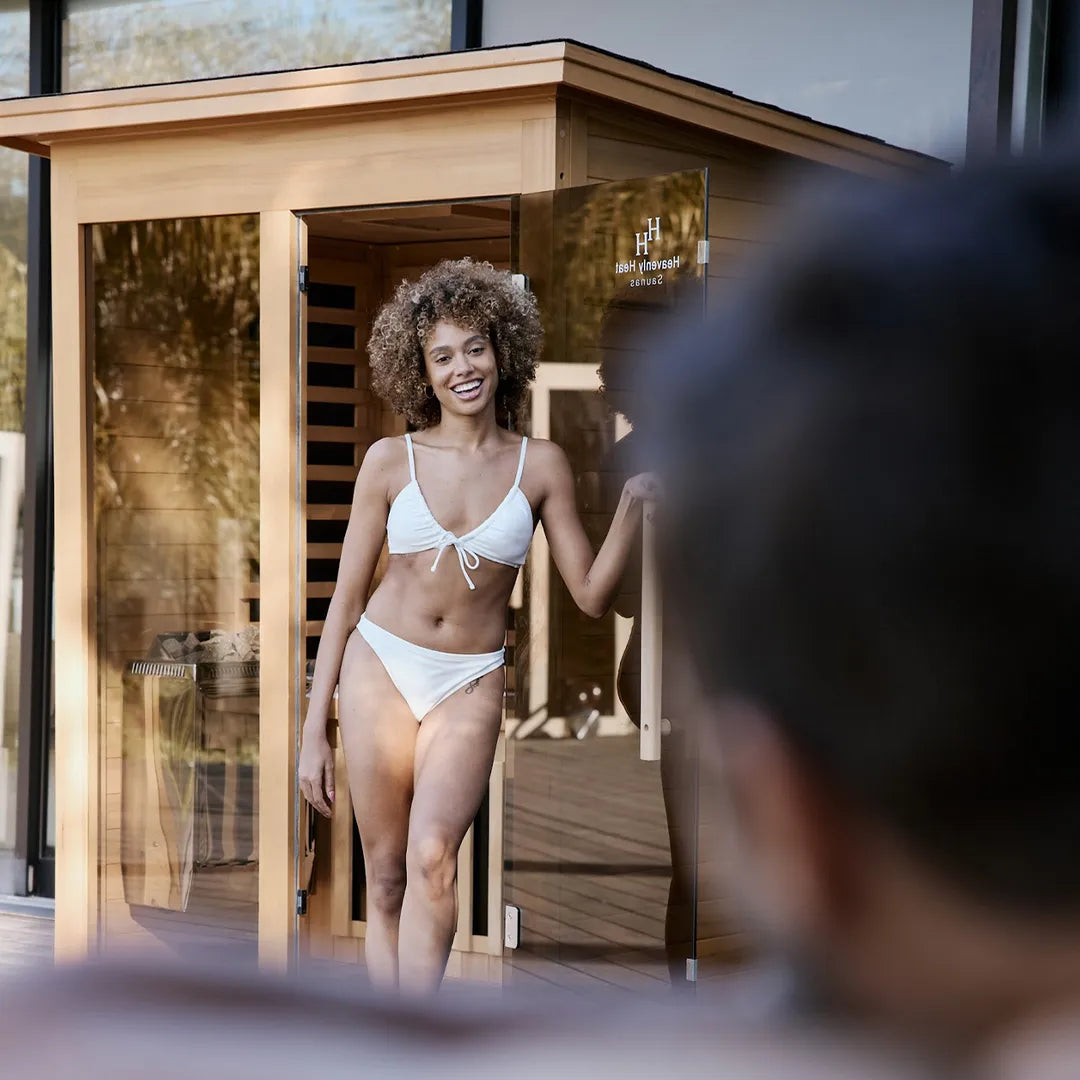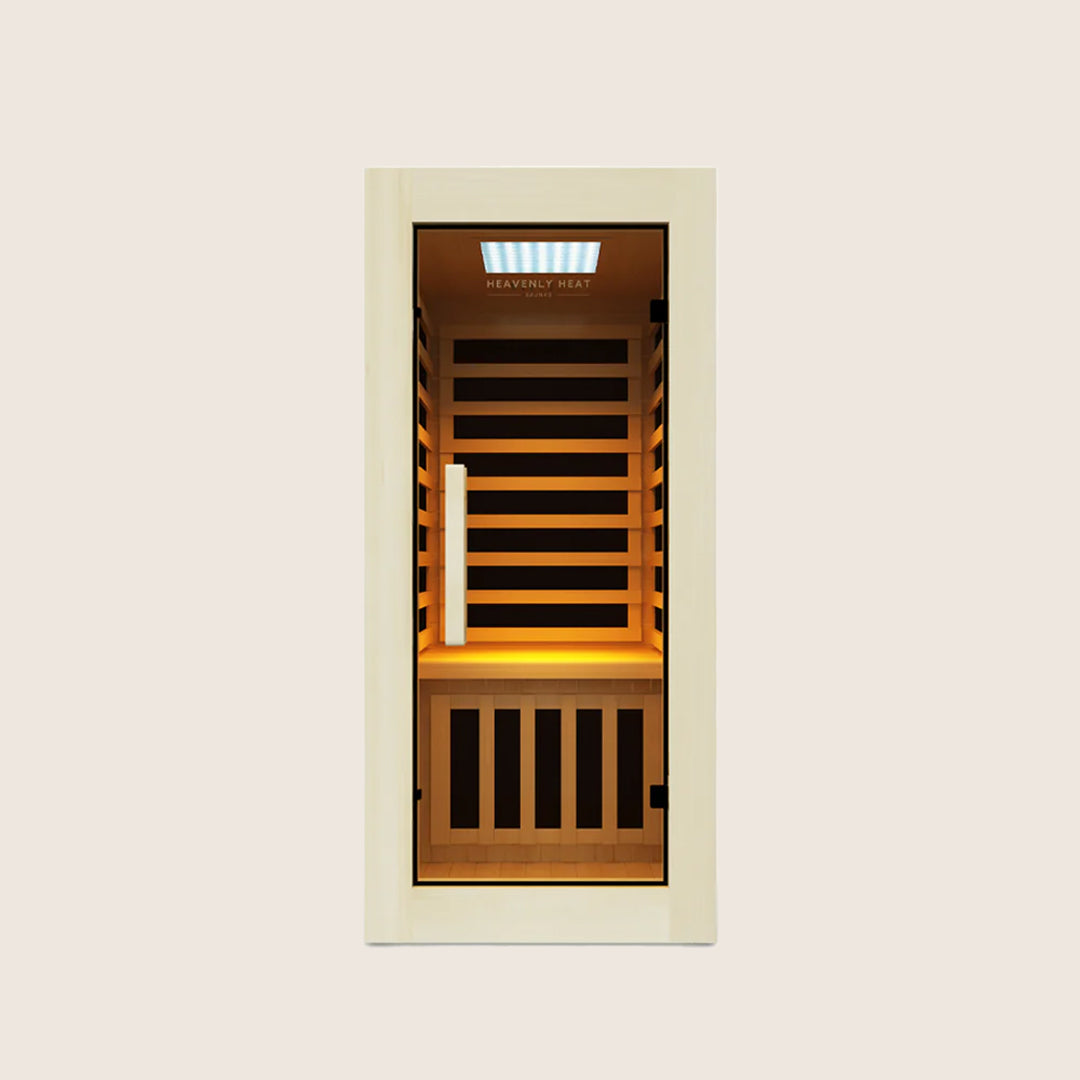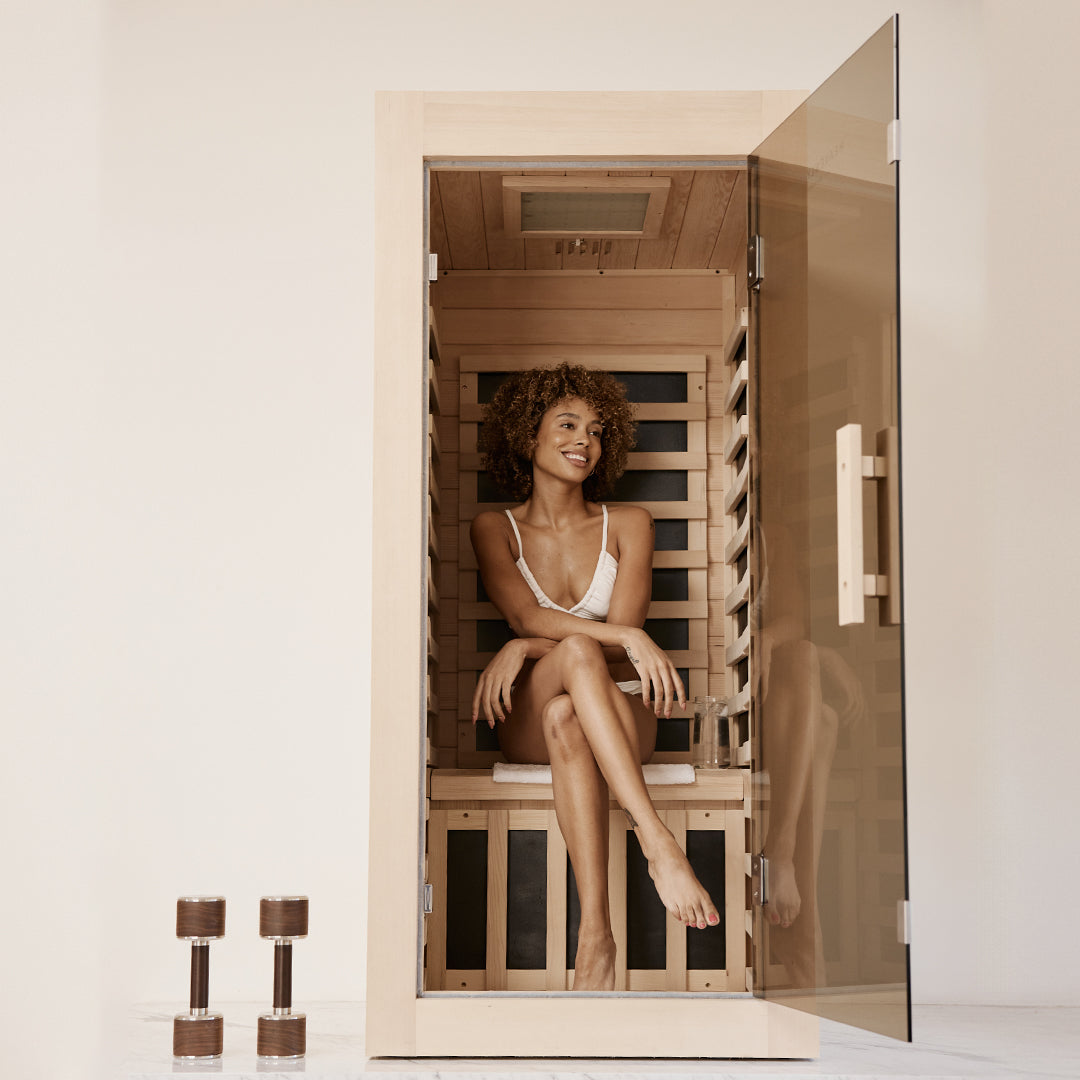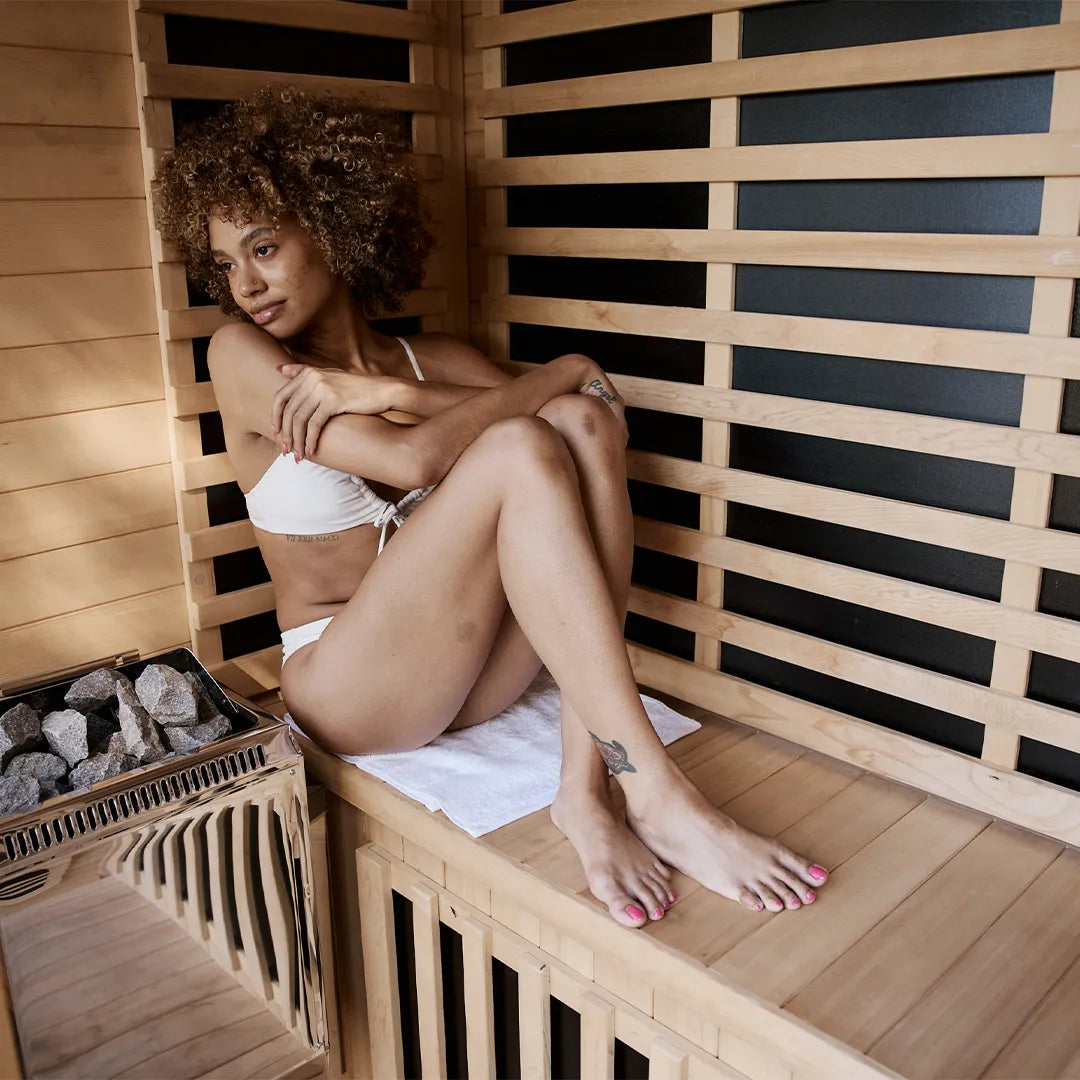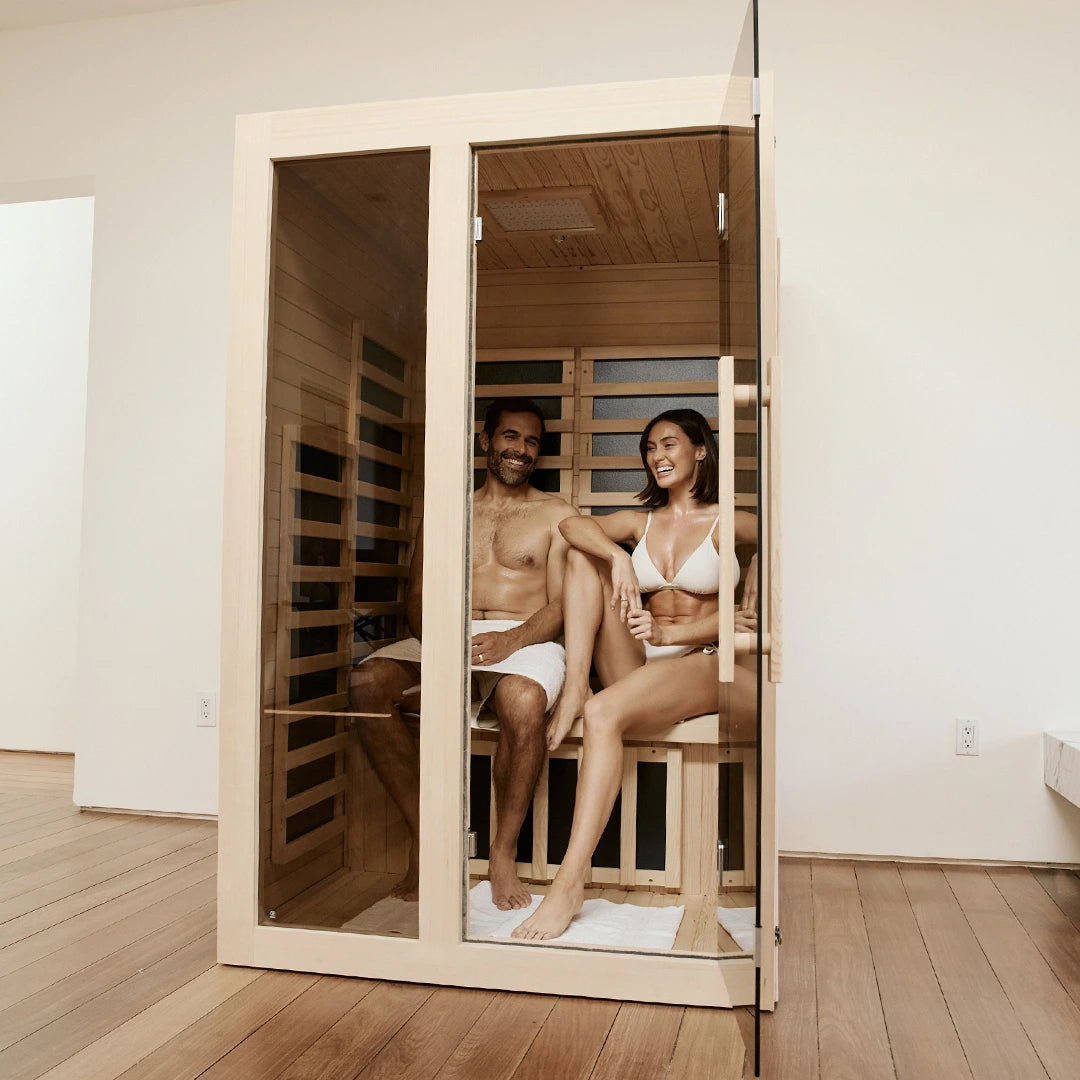Sauna Blanket Vs Sauna Tent: What's The Difference?
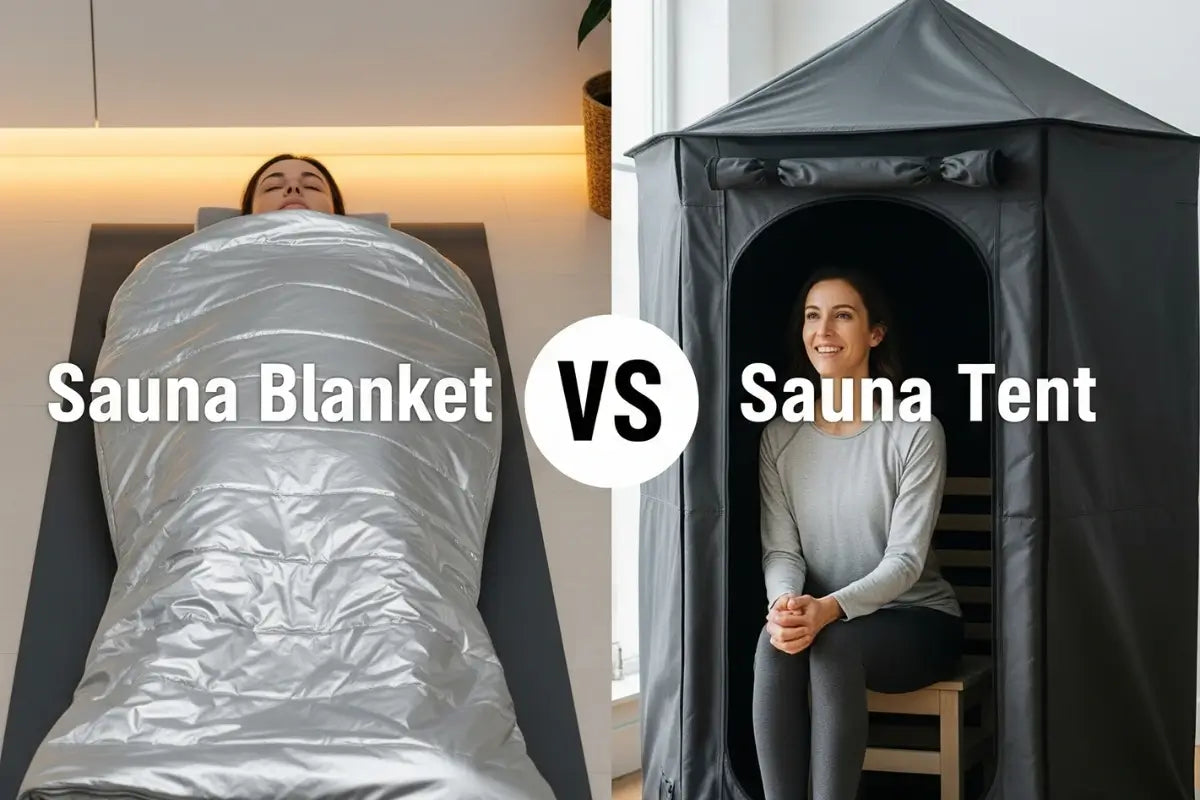
Thinking about getting a sauna for your home? You’ve probably seen sauna blankets and sauna tents, but which one is better?
Both promise relaxation, detox, and health benefits, but they work in different ways. Before you spend your money, find out exactly how they compare so you can choose the one that truly fits your needs.
Table of contents
Key Takeaways
-
Choose Based on Setup Ease: Sauna blankets are quicker to set up and store than tents.
-
Know Your Heat: Blankets offer direct infrared heat, while tents provide ambient, full-body warmth.
-
Consider Space and Portability: Blankets are lighter and easier to store in small spaces.
-
Budget Matters: Sauna blankets are more affordable upfront, but tents tend to last longer.
-
Prioritize Safety and Quality: Avoid cheap products that may contain toxic materials or pose burn risks.
What is a Sauna Blanket?
A sauna blanket is a portable, body-wrapping device that uses infrared heat to induce sweating and promote relaxation.
By emitting far-infrared rays, it penetrates the skin more deeply than traditional heat, raising the body’s core temperature without heating the surrounding air.
Originally popularized as a home alternative to infrared saunas, it is now also used for muscle recovery, detoxification, and stress relief.

What is a Sauna Tent?
A sauna tent is a portable enclosure designed to replicate the experience of a traditional sauna by trapping heat and steam around the body.
Typically powered by infrared heaters or steam generators, it promotes sweating to help with relaxation, detoxification, and muscle recovery.
Originally created as a compact alternative to full-sized saunas, sauna tents are now also used for weight management, improved circulation, and stress relief.

What is the Difference Between a Sauna Blanket and a Sauna Tent?
Design and Usage Position
Sauna blankets are used while lying down, wrapped snugly like a cocoon, ideal for relaxing on a bed or couch.
They're simple to set up: just unfold and plug in. In contrast, sauna tents usually involve sitting upright, with your head outside, and may need some assembly.
Though both are portable, tents offer a roomier, enclosed experience while still folding up for easy storage.
Portability and Storage
When it comes to portability and storage, sauna blankets clearly have the edge. Weighing only 10–22 pounds, they’re much lighter than sauna tents, which can weigh up to 50 pounds.
Sauna blankets fold down small, about the size of a sleeping bag, so they easily fit into drawers or travel bags.
No setup is needed, making them ideal for small spaces or home use. Users love their quick heat-up time and convenience, calling them perfect for stress relief and relaxation on the go.

Heat Distribution
Sauna blankets and sauna tents both offer heat therapy, but they work differently. Sauna blankets provide direct, even heat across the body using infrared technology, making them great for targeting sore muscles or joint pain. In contrast, sauna tents create a more ambient heat that surrounds the whole body, encouraging intense sweating and detoxification, ideal for full-body relaxation and cardiovascular benefits.
Ease of Use
Sauna blankets are generally easier to use and set up than sauna tents, needing little space and no assembly.
They’re ideal for quick sessions, though users, especially those with limited mobility, should be cautious and follow safety guidelines.
Temperature controls vary, with some blankets offering simple remotes while tents may offer more features.
Reviews often favor blankets for their convenience, especially for home use. However, personal comfort, mobility, and safety should guide your choice between the two options.
Cleaning and Maintenance
Sauna blankets and sauna tents both require regular cleaning to stay safe and last longer. Blankets, made from waterproof materials, are easier to wipe down.
After each session, open the blanket or tent for ventilation, let it cool, and clean it with a soft cloth or antibacterial wipe. Avoid abrasive cleaners.
Dry completely before storing in a cool, dry place. Regularly check for wear. Though easy to use, these devices may lack long-term durability compared to higher-end sauna options.
Which is Better for Home Use: a Sauna Blanket or a Sauna Tent?
Sauna blankets are more energy-efficient, using just 0.2–0.3 kWh per session compared to tents, which consume 0.5–0.75 kWh.
Both typically take 10–30 minutes to heat up. Blankets offer focused heat, while tents warm a larger area but use more power, making blankets better for energy-conscious users and tents ideal for fuller body coverage.
Which Provides a More Traditional Sauna Experience: a Sauna Blanket or a Sauna Tent?
Traditional Finnish saunas reach 150°F–195°F and use dry heat. In contrast, sauna blankets and tents usually rely on infrared technology, heating the body directly at lower temperatures (120°F–140°F).
This makes them less similar to traditional saunas in both heat intensity and method, offering a modern, milder take on the classic sauna experience.
How Long Does It Take to Set Up and Take Down a Sauna Blanket vs. a Sauna Tent?
Setting up and taking down a sauna blanket is quick and simple, usually just unfolding, plugging in, and wiping down after use.
In contrast, a sauna tent takes more time, involving several steps like cooling the stove, removing accessories, cleaning and drying the tent and stove, folding the tent properly, packing it up, and storing it in a dry place. While both offer great benefits, the blanket is far easier to manage.
Which is Better for Detoxification: Sauna Blanket or Sauna Tent?
Sauna blankets and sauna tents both help with detoxification by making you sweat. Sauna tents typically heat up to 100–150°F, similar to traditional saunas, leading to effective sweat sessions.
In just 30 minutes, you can sweat out about a pint, roughly one pound, whether using a blanket or a tent, helping your body release toxins and feel refreshed.
Which Uses More Electricity: Sauna Blanket or Sauna Tent?
Sauna blankets generally use less electricity than sauna tents, making them more energy-efficient.
Some modern models include energy-saving features to further reduce costs. While sauna blankets are typically more affordable upfront, your total investment will depend on the brand and included features of either option.
Which is More Affordable: a Sauna Blanket or a Sauna Tent?
Sauna blankets are more budget-friendly upfront, usually costing £50–£100, while sauna tents can start around £1,500.
Although tents last longer (5–10 years) than blankets (1–5 years), the lower initial cost of blankets appeals to many.
However, blankets may have a higher cost-per-use due to shorter lifespan and more frequent replacement needs.
Which is More Durable: a Sauna Blanket or a Sauna Tent?
Sauna blankets tend to wear out faster than sauna tents, mainly because of their foldable design and softer materials.
Frequent use can lead to broken heating elements or stains. Tents often come with longer warranties, hinting at better durability, while blankets usually have shorter coverage due to their more delicate construction.
Is a Sauna Tent More Difficult to Store Than a Sauna Blanket?
Yes, sauna tents are generally harder to store than sauna blankets. Tents are bulkier and boxy, taking up more space, around 2–4 cubic feet, due to frames and insulation.
Blankets, on the other hand, are lighter, flatter, and fold like a yoga mat, easily fitting under beds, in closets, or inside storage bins.
Can Poor-Quality Sauna Tents or Blankets Pose Health Risks?
Yes, low-quality sauna tents and blankets can pose serious health risks. Cheap products may contain harmful materials like PVC or toxic glues that release fumes when heated.
According to riskstop.co.uk, electrical faults, overheating, and poor maintenance are common causes of fires.
Additionally, according to a study in Oxford Academic, substandard products can lead to severe hot air sauna burns, requiring aggressive medical treatment.
These injuries often result from prolonged exposure to high heat. Choosing certified, well-constructed sauna equipment is essential for safety and health.


